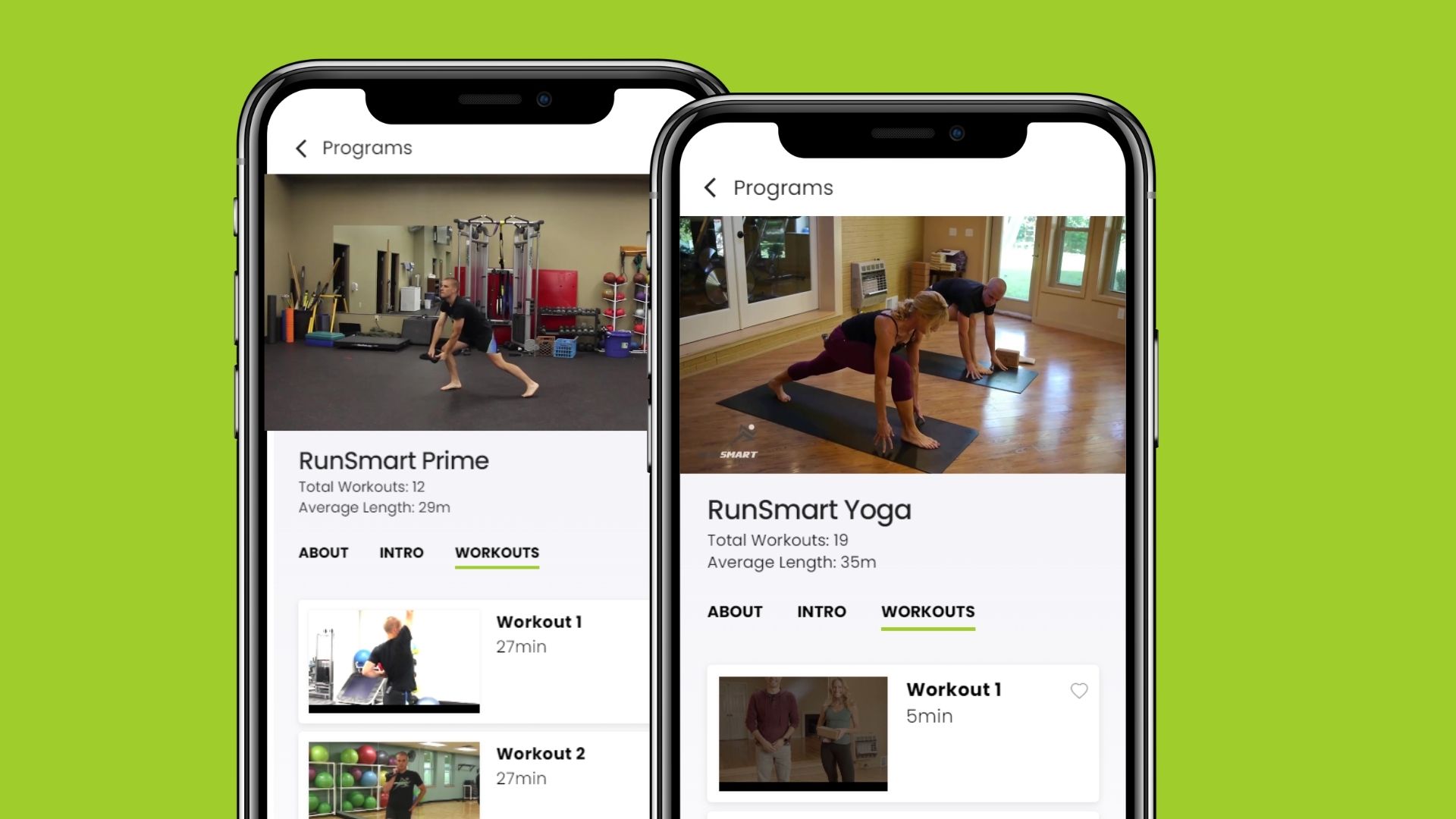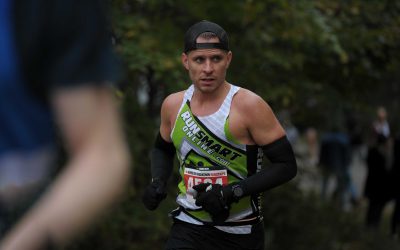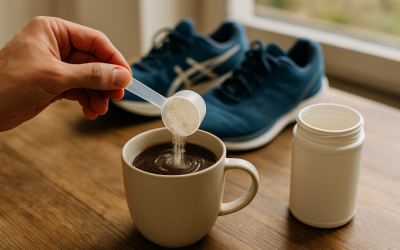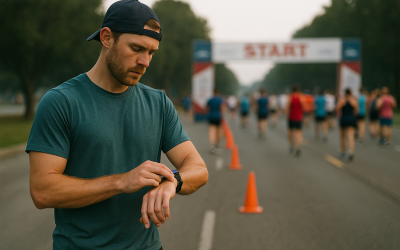Ever find yourself obsessing over cadence, convinced that hitting a magic number will transform your running form? You’re not alone. I’ve seen many runners get caught up in this numbers game, only to realize that focusing solely on cadence does little to improve their stride.
Let’s Break It Down
Cadence, or the number of steps you take per minute, has become a hot topic in the running community. Some believe increasing cadence will automatically lead to better form and fewer injuries. But here’s the truth: cadence is a byproduct of your overall running form, not the other way around. If you fix the more significant pieces of your form, your cadence will naturally fall into place.
The Ground Rule: Stance Time
One of the most critical aspects of run form is stance time. I like to say, “If you’re on the ground, you’re slowing down.” The longer your foot stays on the ground, the more energy you lose with each stride. Minimizing your stance time will naturally quicken your cadence, but more importantly, you’ll run more efficiently.
The Power of Stride Length
Next up is stride length. The key here is to maximize the distance you travel with each step without overstriding, which can lead to injuries. Stride length should be about propelling yourself forward efficiently, not just covering more ground. When you get this right, you’ll notice that your cadence adjusts to complement your improved stride length.
Cadence Isn’t King (or Queen)
Many runners don’t realize that stance time and stride length will change depending on your running speed, while cadence tends to remain relatively steady. So, if you’re laser-focused on cadence alone, you’re likely missing out on the bigger picture of efficient running.
How to Track the Right Metrics
Most fitness watches, like Garmin and Coros, offer features for tracking stance time, stride length, and cadence. These watches can provide real-time feedback, helping you see how your form changes as you run. By reviewing this data post-run, you can identify areas for improvement and ensure you’re focusing on the right aspects of your form.
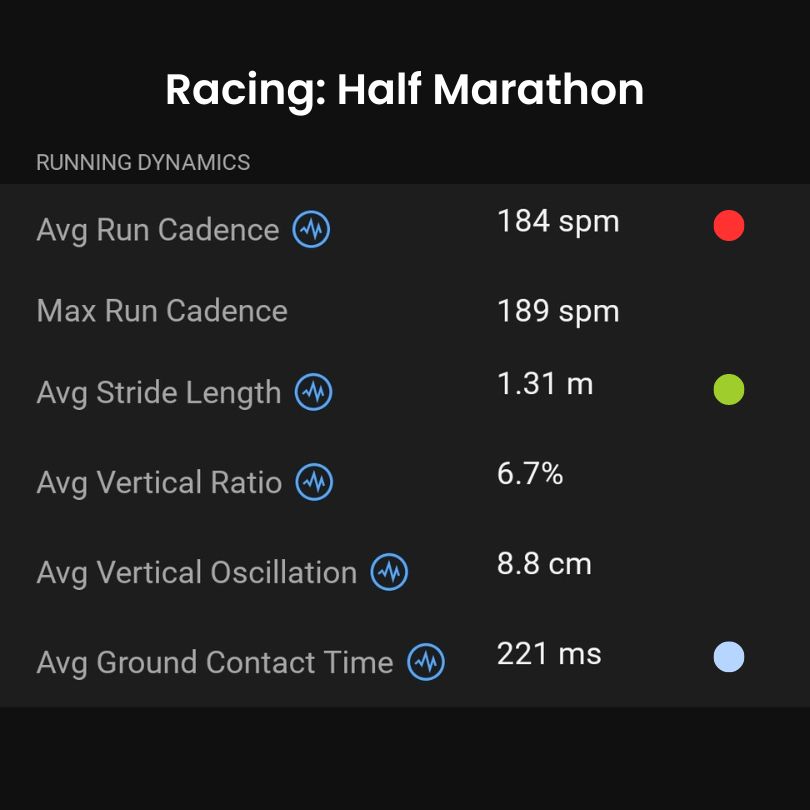
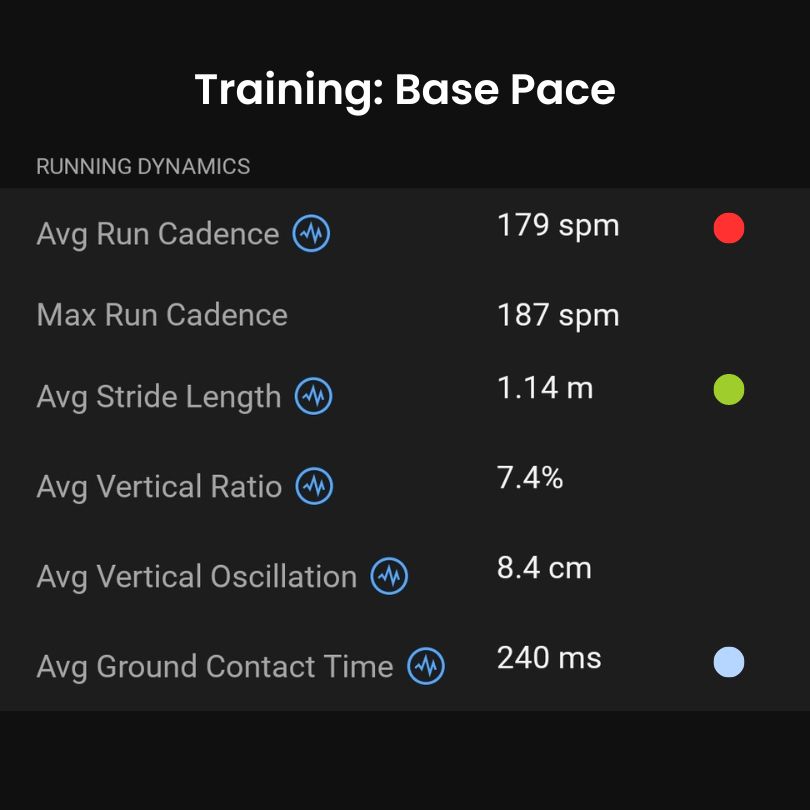
Images Above:
Here are statistics from racing a half marathon and running a training run at base pace. Note how cadence stays fairly similar despite nearly a 90-second change per mile in pace. On the other hand (or is it foot?), notice how stride length increased and contact time decreased with faster running speeds.
Don’t Obsess Over the Numbers
While having access to all this data is excellent, it’s essential not to get too caught up in the numbers. Running is supposed to be enjoyable, and constantly monitoring every metric can suck the fun right out of it. Use the data as a guide, but remember that the ultimate goal is to run efficiently and comfortably. Trust your body, and let the numbers support your journey rather than dictate it.

